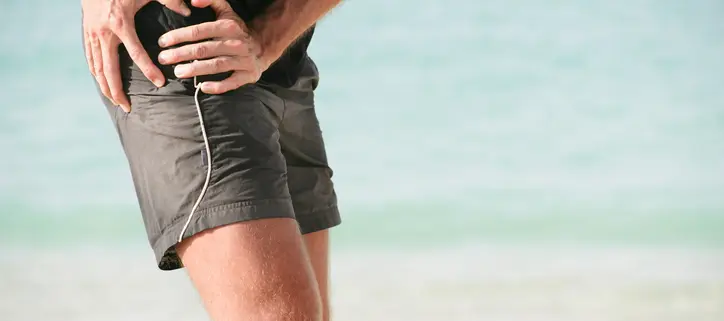Proper Sports Techniques to Prevent Hip Pain
The hip joint is one the large joints of the body that helps the thigh move forward and backward. The hip joint also rotates when sitting and with changes of direction when walking. The hip joint is where the ball of the thigh bone (femur) joins the pelvis at a socket called the acetabulum. There is cartilage covering both the bone of the femur and the acetabulum of the pelvis in the hip joint. A joint lining tissue, called synovium, surrounds the hip joint. The synovium tissue produces fluid that lubricates the joint and provides nutrients to the cartilage of the joint.
The singer Shakira had it right when she says “Hips Don’t Lie” in her hit song. It seems that until our hips are in pain, we don’t give them much thought. We use our hips every day, when we walk, stand, sit and workout. In fact, there are few times when we are not using our hips, especially when playing sports or exercising.
If your hips are not working properly, other movements and muscles will suffer. Your hips are able to withstand a great amount of stress, but if they are used improperly, an uneven amount of stress can be transferred elsewhere in the body where it is not meant to go. Over time, the muscle that is compensating for the weakened hip muscles will begin to feel tight, decreasing agility and speed, as well as taking longer to recover. Reducing participation in painful activities is the most important step a patient can take. Here are some other tips to help reduce pain:
Modifying activity: Athletes who must perform repetitive movements will need to avoid painful activities and modify their training during the rehabilitation process.
Icing: Applying ice after exercise may diminish the pain and other symptoms, such as swelling.
Medication: Physicians frequently prescribe ibuprofen or acetaminophen to help reduce inflammation and pain. Physicians also may prescribe injections of steroids or anesthetic to both diagnose the source and treat the pain.
Rehabilitation: Physical therapy is often needed to reduce pain and improve function. Therapy will include heat and/or ice to decrease inflammation and stretching/strengthening exercises for specific hip muscles. The therapy will progress to more functional activities, simulating sport-specific motions. As the symptoms improve, a specific training program will allow proper, incremental return to full activity.
To learn more about hip pain and how to treat it, call the Colorado Center of Orthopaedic Excellence at (719) 623-1050 to request an appointment, or request one online.







